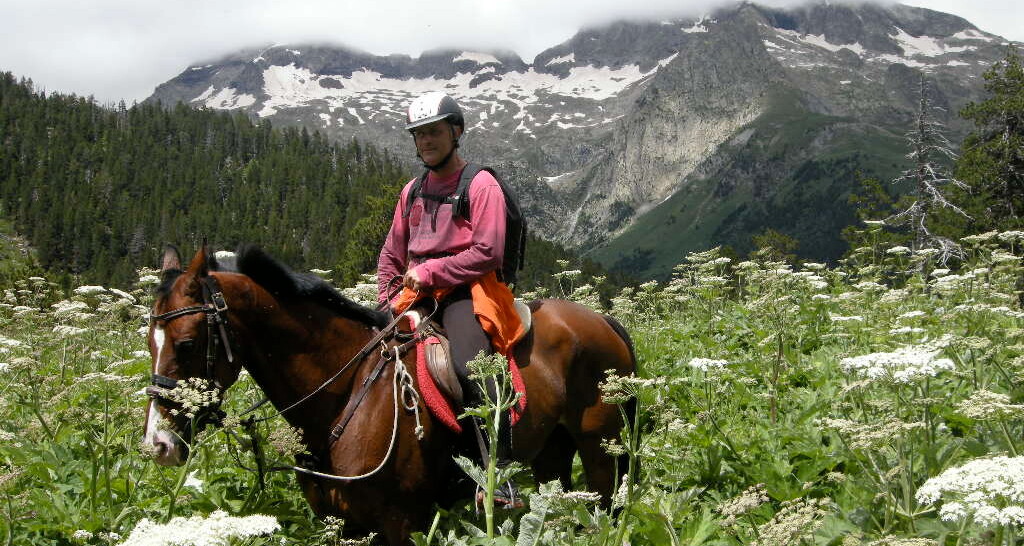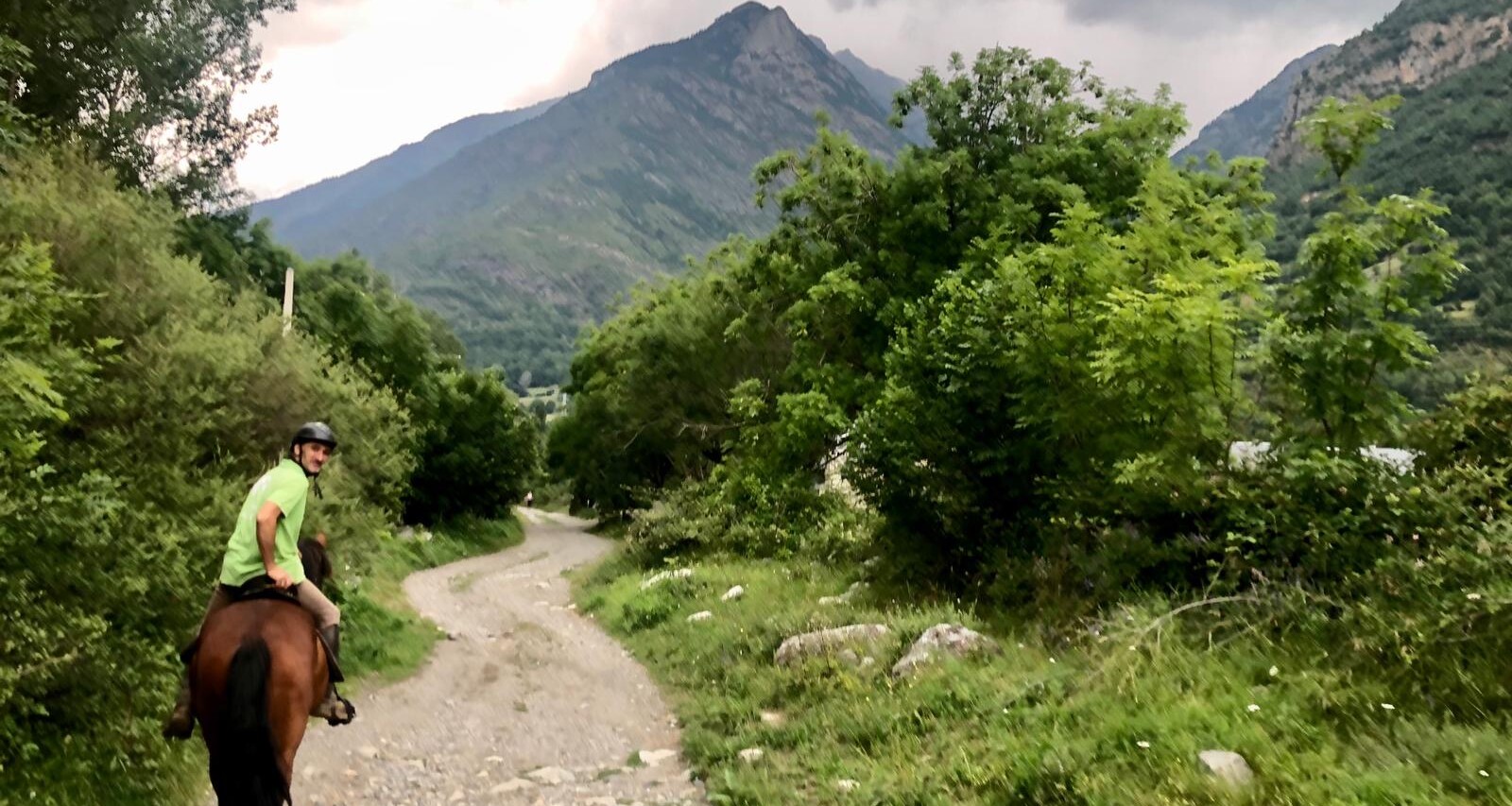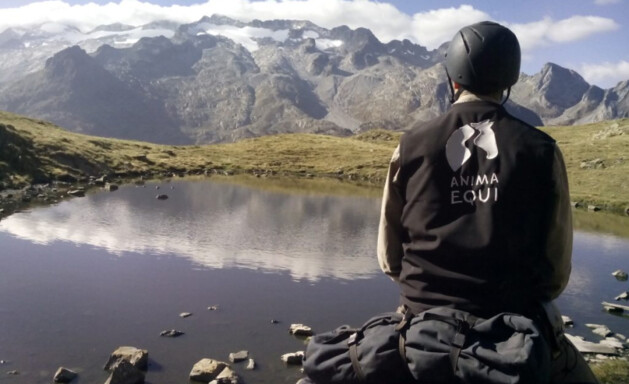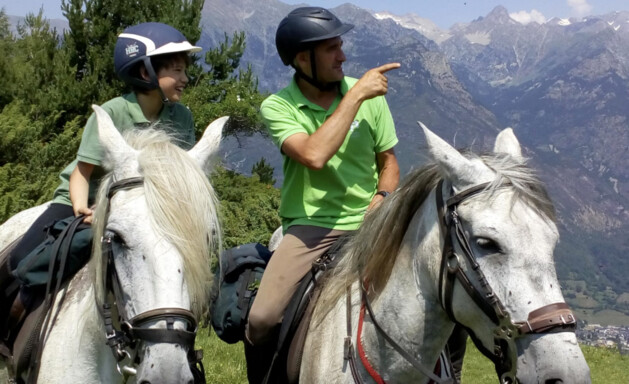Horseback riding techniques in high mountain areas
Key strategies for horseback riding and undertaking multi-day rides effectively in mountainous terrain.

To facilitate preparation for such adventures, in the following article we explore key strategies for horseback riding and undertaking multi-day rides effectively in mountainous terrain.
First step: Choosing the right horse
One of the essential characteristics of a horse for equestrian tourism is a calm and well-balanced temperament. They should enjoy outdoor life, meaning they should be easy to shoe, prepare, and handle from the ground. They must adapt easily to changes, as horseback riding rides do not always offer optimal conditions in terms of lodging, food, or weather. Additionally, they should have natural impulsion, with a long stride and smooth gaits.
Of course, the horse must be in good health and physical shape. It needs to be strong and resilient, as it will carry equipment for many hours each day under highly variable weather conditions. Not all horse breeds respond the same way to equestrian rides. At Anima Equi, we work with Pure Spanish Horses (PRE) and crossbreeds. This variety is characterized by a well-balanced morphology that, combined with its noble and docile temperament, makes it particularly suited to tackling the challenges of high mountains. Moreover, its agility and endurance allow it to adapt to demanding and irregular terrain.
Our horses always live in open pastures in a semi-wild state, constantly in contact with nature. This not only enhances their physical endurance but also strengthens their calm temperament, making them very safe companions even on the most challenging rides. In addition to being friendly, they are reliable and resilient, with a great ability to traverse difficult terrain, as they are accustomed to crossing mountains, navigating tricky paths, and fording rivers.

Specific training for mountain riding
Building a relationship of trust between horse and rider is crucial since outdoor riding presents risky situations where both must rely on each other. If the ride includes multiple horses that are socially adapted to living in a herd, handling them becomes much easier.
On our mountain horseback rides, we traverse different altitude zones and often face steep slopes. To help the horse handle this challenge without difficulty, we recommend progressive training that includes:
- Work on gentle slopes: Getting the horse used to ascending and descending hills improves its balance and strength.
- Controlled gait techniques: Teaching the horse to maintain a steady pace on unstable ground.
- Desensitization: Exposing the horse to different terrains, sounds, and obstacles to improve confidence and reaction skills.
Horseback riding on varied terrain
In high-mountain rides requiring an advanced riding level, both rider and horse may face various challenges such as steep inclines and descents, river crossings, or unstable surfaces that may include mud or rocks. In these situations, it is essential that the rider applies different techniques to facilitate the journey for the horse. Riders should be proficient in all three gaits—walk, trot, and canter—in outdoor conditions.
When ascending steep slopes, maintaining a steady and balanced pace is key. While mounting, it is advisable to use a higher elevation or rock as support to ease the horse’s burden and avoid unnecessary strain. When riding on inclines, shift the body forward while climbing to relieve weight from the hindquarters, and lean back when descending. The rider's upper body should always adjust to the terrain’s slope, maintaining perpendicular alignment.
The rider’s role: posture and communication
During high-mountain horseback rides, the rider must have fine control over balance and be able to interpret the horse’s reactions. The use of subtle aids (legs, weight, and reins) allows for clear and effective communication. Additionally, anticipating changes in terrain is essential to adjusting the riding strategy.
Horses used for equestrian tourism should be accustomed to being guided with one or two hands on the reins. We keep the reins loose since long riding days require allowing the horse to stretch its neck. In more challenging sections, the horse may need to lower its head even further to assess where to place its feet, but without losing rein contact. Maintaining light rein contact and avoiding abrupt movements helps prevent accidents.
At Anima Equi, the training of our PRE and crossbred horses focuses on developing agile, attentive, and calm horses capable of responding smoothly and precisely to rider commands. We use English bridles and hackamores, ensuring a delicate yet effective rein contact that prioritizes safety in high mountains while respecting the horse and providing comfort to the rider. Additionally, we use comfortable English trekking saddles that allow saddlebags to be carried while ensuring even weight distribution. Lastly, ground handling is also an essential part of outdoor riding, as in extreme slopes or difficult terrain, it is often best to dismount and lead the horse for safety.
Key reminders: basic care and weather conditions
Always remember that on long equestrian rides, especially in high mountain terrain, a horse expends more energy than on flat ground. For this reason, frequent breaks should be scheduled, ensuring the horse has access to clean water and a fiber- and energy-rich diet to maintain endurance.
Lastly, keep in mind that mountain weather can change rapidly. It is crucial to check the weather forecast before each equestrian ride and carry proper equipment for any conditions. Additionally, saddlebags should include a first-aid kit, basic farrier tools, a veterinary kit, a road safety kit, communication devices, camping gear, a saw, and a safety knife in case the horse gets entangled in its lead rope. All these precautions will make the journey safer and more enjoyable.

